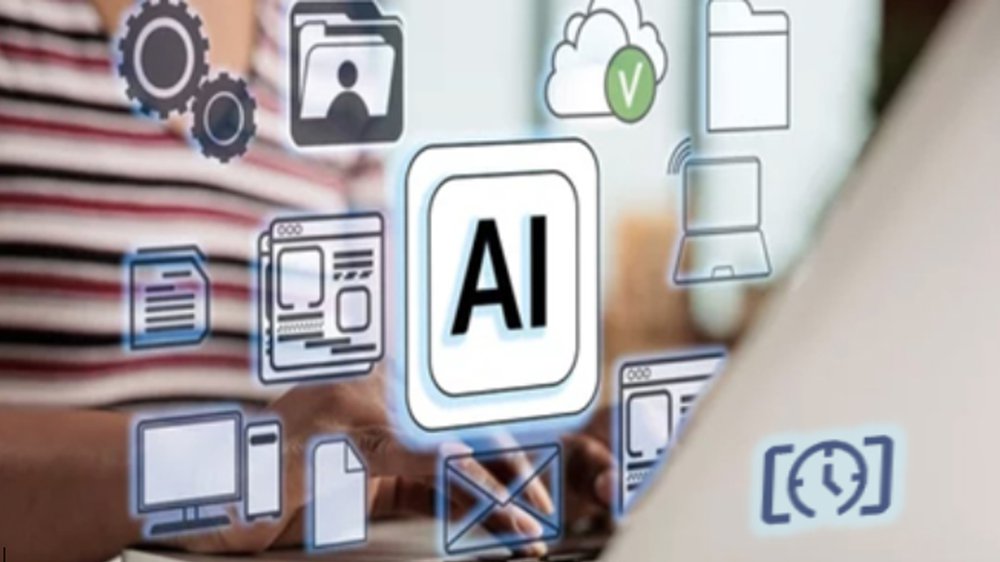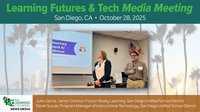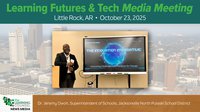Unlike typical scheduling tools, Time AI takes decision-making usually reserved for humans and automates it through dynamic, adaptive algorithms. The platform is more than just an intelligent calendar; it is a comprehensive system that manages complex time coordination, fractionalizes traditional classroom structures, and supports pace-based learning at scale.
You may be familiar with apps already in Microsoft and Google for sharing your booking link, or Calendly. You may also be familiar with how Uber or Lyft work to coordinate against time values to schedule you a ride.
Time AI is an artificial intelligence that goes beyond regular intelligent calendaring to make decisions for you to manages appointments and meeting times without so much human coordination labor.
For schooling, it may be the most revolutionary AI yet. Time AI on the Knowstory site will allow you to make meetings that “float” until a number of participants enroll equaling your set cohort value. These AI cohorting meetings are set for each smaller cohort set automatically while accruing the next set for a later date and time until all participants are through. A cohort can be set to each one participant with the meeting creator or each 2-100. In these types of meetings, a class group, or set of teachers doing some professional development, will all get the invitation with prior instructions, attachments, link and a target date that itself keeps shifting forward by preset increments. The meeting invite tells participants to complete the prior work before accepting. The act of accepting the meeting is an enrollment that “floats” until the cohort value is met. This creates a random pattern of cohort participants based on their individual pace through time.
Once you grasp what AI can do to cohort and set itself to calendars, you can imagine a sequence of these types of meetings replacing the regular class daily class meeting for whole groups that now disaggregate across time based on their individual pace with the AI watching to see which individuals can come together and when.
The invention of Time AI allows for class time to be disaggregated, or fractionalized, into two arenas of instruction:
- Live teacher moments of verbalization together with a cohort, be it lecture, discussion, project, or any method.
- The independent reading, doing courseware modules, watching videos, etc.
By separating the togetherness that is normal in traditional schooling, meetings by teachers are always typically shorter and with smaller groups who are always at the same point in any course. That pulls a massive burden off of teachers while also randomizing the pattern of their day as to which part of any one course is going to fill up their day. Mathematical modeling shows they will save roughly 50% of their time by distinguishing live teaching time from study time and having students do their study time with separate oversight. Now the teacher has a lot of time to go to shorter meetings and also to roam to help individuals at any time while they are in homerooms or remote.
Time is one of our resources and is easily wasted. When human minds think of adding or subtracting hours to consider meetings to set across multiple time zones, things can get tricky. Appointments may end up scheduled at the wrong hour and have to be reset. Humans tend to round time up to half or full hours, rarely setting a meeting for, say 10:13 am. Instead they will choose 10:00 am or 10:30 am. They will bracket time in easily managed chunks, rarely realizing that they might have broken up their day much differently. This has been the case for most school master schedules for a quarter of a century.
Machines add and subtract time very easily but ask someone to add up eleven minutes plus seventy-three minutes plus an hour and forty-one minutes and state the total hours and minutes, and it will take most people a bit of thinking. It’s a total of three hours and five minutes, by the way. Hours are sixty minutes, and adding and subtracting time is not something humans do routinely. Excellent time management is a rare skill, and people rely on calendars. Yet calendar coordination is itself rather arduous even when automated for someone to pick a time on someone else’s calendar there is still manual comparison.
Time AI must count and weight minutes to resolve available common times between disparate calendars. Between two calendars might not be so much to calculate, but between thirty calendars is considerable. Time AI has to also know humans setting appointments will want some parameters such as meetings not setting three years in the future, or setting so close to present time no one can scramble to make the appointment. Time AI needs some input but can treat time in layers so that even if a person has a schedule apparently booked for an hour’s class, AI could treat the same apparently blocked time as open time for a student in that class so that a few minutes appear on the teacher’s calendar to have a side conversation during that class.
What does Time AI mean for the future of schooling? Flexibility through Time Fractionalization
Time AI will reshape how school spaces and master schedules work. It can be applied within existing master schedules by teachers, to just one program like an Alternative school-within-a-school or district, to online and remote learning, or it can replace the entire master schedule structure. It’s first adoptions are for schools offering courses which may have only one student or a handful and need to cause live teaching intersection rather than all independent study with no real teaching.
Time AI fundamentally changes the concept of classroom instruction by fractionalizing traditional time blocks. Instead of whole-group classes moving in lockstep, smaller cohorts interact with teachers for focused instruction while spending independent study time in campus home rooms or elsewhere. This innovative approach provides:
- Efficient Use of Teacher Time: Teachers can allocate up to 50% more time to direct instruction by reducing total time in whole-group sessions.
- Personalized Learning: Cohorts are tailored to students at the same curriculum level, eliminating the challenges of mixed-grade abilities within a single class.
- Flexible Teaching Modalities: Teachers can instruct students both in-person and virtually, seamlessly integrating online participants with physical classroom cohorts.
- Enabled Gig and Fractional Teaching: Teachers can set up courses and offer windows of their time to teach independently from institutions or as fractional employees.
Time AI has these primary capabilities:
- Common-Time Decisions
The platform finds the nearest common availability among participants and automatically schedules meetings or appointments. - Cohort-Based Meeting Setting
Time AI introduces "AI Cohorting Meets," where a single meeting splits into multiples at different times for subsets of participants based on when they enrolled by accepting. One meeting with thirty participants and a cohort value of ten will set at least three times (3 x 10 = 30 participants). This AI function is perfect for self-paced learning that still intersects with live teaching, training in any organization, and other business purposes. Each meeting also generates a link that can be used in outside Learning Management Systems for participants to click to enroll. - Sequenced Cohorting Meetings
Cohort-based meetings can be tethered together into a sequence for use inside an LMS or into a course frame in the same Time AI system. The AI will provide tracking of each step so schools are meeting their instructional minutes requirements. With complex tracking of both study steps and class meetings, participants can be seen to be ahead, behind or right on target to get through the sequence of instruction steps and the bisecting AI cohorting meets.
4. Rolling Enrollment Courses
Courses with Time AI class meetings are able to add new participants at any time for the AI to manage intersection with live teaching and fellow students.
5. Push-Forward Recalculation
For meetings and appointments, users can opt to use a push-forward function to have the AI recalculate and reset their date of participation.
6. Bi-Level Scheduling for Flexibility
Time AI’s layered scheduling allows users to balance structured schedules with on-demand adaptability.
7. Labeled Open Time
Users can label and assign blocks of open time for specific subjects or activities so that the AI will set requested appointments only in those available times.
Benefits for Schools and Teachers
Time AI addresses many challenges faced by modern educators and schools, including:
- Resource Sharing and Simplification: Schools can collapse online programs into live campus programs and vice versa because the live-teaching intersection, whether small group or just an individual student check-in, is managed by the Time AI and any member can be remote or in-person, including the teacher. This also allows teachers to be resource-shared across multiple institutions.
- Better Equity and Outcomes: Time AI helps remove the inequity of non-homogeneous learning levels through assignment to grades and courses by age, even adjusting underlying time-on-task in one subject over others to catch individual students up. Every student can be placed at the right point on any course in any grade. Absenteeism becomes a non-issue as every student is self-paced. Algorithms quantify task and teaching time to meet any instructional minutes requirements.
- Improved Social Dynamics: Schools using Time AI as a backdrop to reorganizing the physical learning environments put students in age-and-grade-level appropriate homerooms while allowing any aged student to be on any grade-level in all subjects.
Application Arenas
Time AI may be piloted very simply with existing teaching and learning programs by creating a single AI cohorting meet and giving a class a set of instructions to complete before enrolling. This might be for some project-based learning or other assignment flanking core teaching.
Classroom
- Intelligent calendar bookings for individualized instruction, parents, administrators
- Mixed ability class management
- Course framing with option to add AI cohorting
- Project-based learning
Professional Development & Administration
- AI calendaring teacher reviews
- AI calendaring general administration with groups
- Pace-based and project-based professional development
Online & Hybrid Learning
- Combine staff of online programs with campus
- No-enrollment-deadline courses
- Public marketplace course posting
- Enable school-to-school gig teaching networks and tutoring
Master Schedule Flexibility
- Universal pace-based learning with indefinite grade banding
- Bi-level AI calendaring with labeled Holds (open time designated with a label)
- Independent schedule assignment for every group member
- Pacing guide calendaring tagging to academic standards
Enabled Role Shift for Teachers
With Time AI, Teachers handle cognition, connection, and care only. Time AI elevates teachers from task-driven roles to purpose-driven ones—freeing them to be experts in student growth, not curriculum mechanics. The roles for teachers shift to:
- Learning Coach & Progress Monitor - Ensures students stay on track, understand content, and persist through challenges. Uses built-in data tools to track real-time progress.
- Diagnostic Strategist - Interprets AI-generated analytics to identify who needs intervention or enrichment. Makes human decisions about when to intervene, reteach, or extend.
- Personalized Support Guide - Adapts the pre-set curriculum based on learner needs. Maintains human connection as a key driver of engagement and growth. Offers care and cultural awareness that technology cannot replace.
- Mentor of Learning Behaviors - Coaches executive function, self-regulation, motivation, and self-efficacy. Anchors the emotional and social experience of the learner.
Adoption
Adopting Time AI typically means organizing lessons into digital frameworks so that they can be independently paced through by learners. It is content agnostic so any Learning Management System, courseware, discrete digital learning object and even paper textbooks can be used with AI meeting links pasted into outside systems or placed into the platform’s own course frames as references, links or attachments.
A key to adopting is becoming aware of using teachers just for teaching, not oversight during independent study. Teachers can still tweak materials and build separate course paths as needed.
Integrations with Microsoft and Google ensure calendars sync.
Knowstory is education’s AI calendar social ecosystem platform. It offers free and premium calendaring services to make social intersection and live teaching more efficient. It has supporting closed group creation for school, district, company, interest and event groups. It also offers a featured marketplace function presenting ad tiles for courses or edtech, as well as bookmarking, credentialing/badging, academic standards library, dynamic inventory management, and meeting tracking panels.











